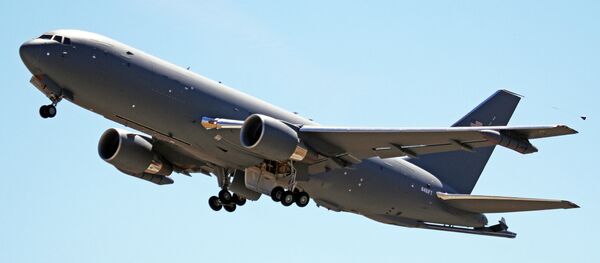While some of the Boeing KC-46 Pegasus' systems could withstand EMP conditions, the tanker's "mission systems capability during such an event" were compromised, according to a report from the Pentagon's Director of Test and Evaluation (DOT&E) released last week.
Boeing's deadline to deliver 18 Pegasus aircraft, which are developed in the model of Boeing's 767 airliner, is this October. This new date is already 14 months later than initially planned, a March 2017 Government Accountability report says.
Last July, Boeing announced that the KC-46 completed EMP testing at Patuxent River Naval Air Station in Maryland and at Edwards Air Force Base in California. According to Boeing KC-46 program manager Mike Gibbons, the tanker is "protected by various hardening and shielding technologies designed into the aircraft to negate any effects on the aircraft."
But the Pentagon's testing office doesn't seem to agree: "Electromagnetic pulse testing was not accomplished in accordance with the DOT&E-approved Test and Evaluation Master Plan," the Pentagon review states.
Specifically, the EMP knocked out "multiple mission-critical systems prior to testing and, therefore, their EMP tolerance was not tested on an aircraft in a mission-representative configuration," the evaluation office said, noting that the testing did not adequately show that the KC-46 could complete aerial refueling following an EMP blast.
According to the Pentagon, the KC-46 will fulfill a variety of missions such as nuclear operations support, global strike support, theater support and special operations support.
The US military is slated to receive 179 new KC-46 tankers by 2028.




